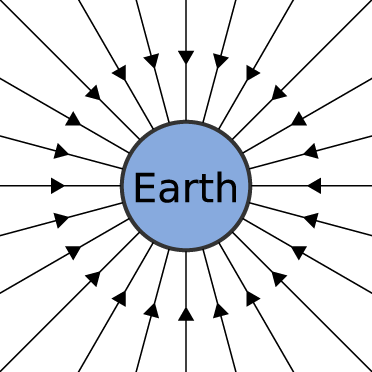Gravity
by Andrew Boyd
Today, we let go. The University of Houston's College of Engineering presents this series about the machines that make our civilization run, and the people whose ingenuity created them.
Here's a magic trick that, if done properly, is sure to amaze your friends. Take a favorite stuffed animal and place it at one end of your kitchen table. Next, take a seat across the table and out of reach of the animal. Now proclaim to everyone present that you will cause the animal to slide across the table and into your hands. Stare intently at it. Stare some more. Build the suspense. Finally, after a good ten seconds, look your friends in the eyes and pro-claim, "What? Are you crazy? I can't simply will something across the table."

Stuffed animal from Monsters, Inc. Photo Credit: Flickr
Now you're ready for the payoff. Pick up the animal, hold it in front of you, and let go. Without any visible means of propulsion, the animal drops from your hands to the floor. Gravity, it seems, is a magical force.
We're so used to gravity it doesn't seem especially magical. Yet when Isaac Newton first proposed his theory of gravity it was met with skepticism. Gravity worked without two bodies coming in contact with one another. This was magic of the highest order. One of history's great ironies is that Newton, whose theory of gravity was one of the great landmarks in science, was accused of taking science backward by introducing this mystical force.
Christiaan Huygens dismissed the underpinnings of Newton's work as "absurd." Gottfried Wilhelm Leibniz, who sparred with Newton over claims regarding the discovery of calculus, called gravity a "return to occult quantities, and even worse, to inexplicable ones." Newton attempted to sidestep the conflict, relying on the now time honored tradition of invoking the fact that "the math works; don't lose sleep worrying why." But even while Newton steered clear of the controversy, his writings show that he, too, was troubled by action at a distance.
For the three centuries following Newton, physicists worried over what made gravity work. Just as the invisible but very real air around us carries sound waves, physicists imagined an invisible but also very real aether pervading every corner of the universe. But theories relying on aether made things more complicated without adding useful explanatory power. And unlike air, the existence of aether was never experimentally confirmed.

Arrows pointing to the earth, suggesting the notion of field. Photo Credit: Wikimedia Commons
In the end, physicists contented themselves with the notion of a field. A field is simply a mathematical description of the gravity an object exerts at any point in space. In other words, we've stopped worrying about what imparts gravity and have come to simply accept it. The mass of the earth exerts a uniform, repeatable pull on stuffed animals, rubber balls, and anything else we care to drop on the floor.

Egg yolk from a broken egg. Photo Credit: Wikimedia Commons
But our unconditional acceptance of gravity and our familiarity with it shouldn't stop us from pondering this fundamental force of nature. Let your mind go some time and see where you come down.
I'm Andy Boyd, at the University of Houston, where we're interested in the way inventive minds work.
(Theme music)
General relativity provides an alternative, more accurate description of gravity as a warping of space-time. Here I've focused on the classical/Newtonian description we perceive in everyday life.
Classical Field Theory. From the Wikipedia website: https://en.wikipedia.org/wiki/Classical_field_theory. Accessed January 27, 2015.
B. Clegg. Gravity: How the Weakest Force in the Universe Shaped Our Lives. New York: Saint Martin's Press, 2012.
This episode first aired on January 27 , 2015.